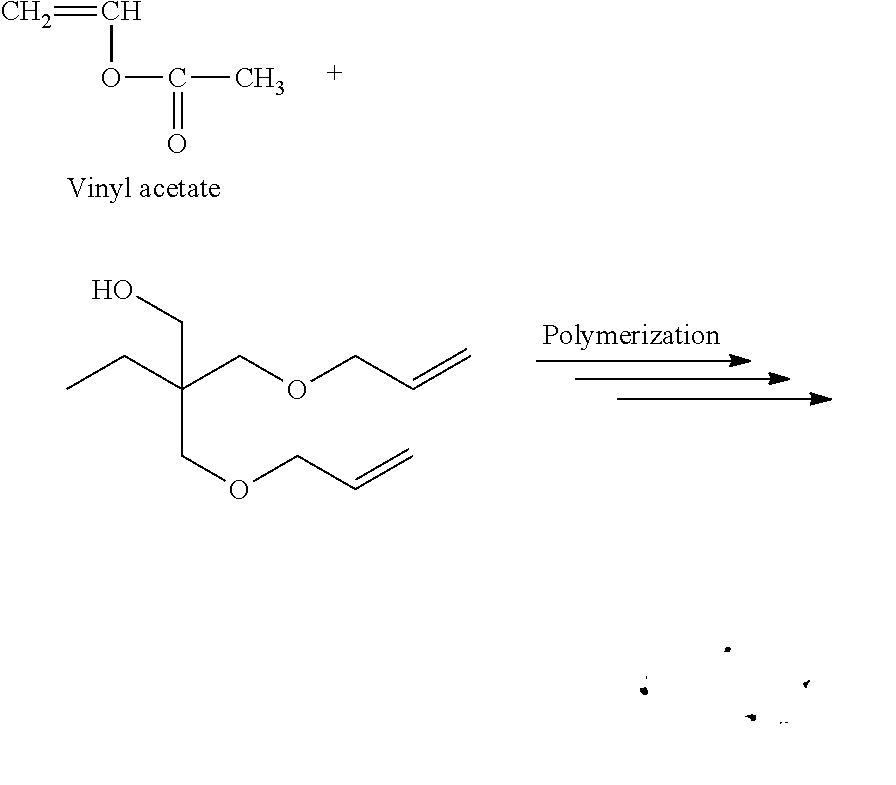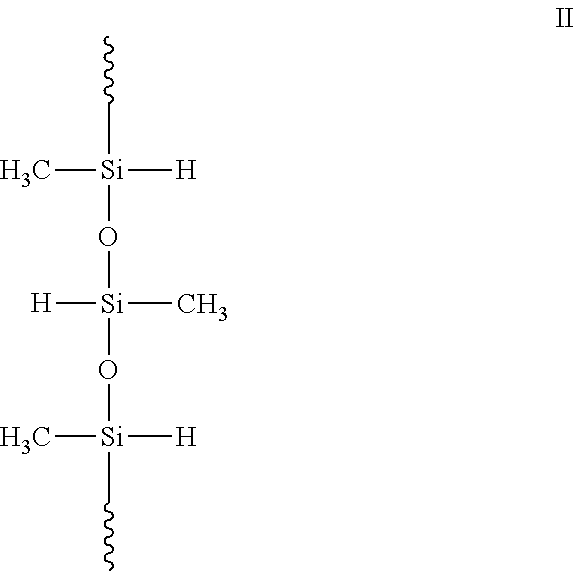Impregnating materials for release papers
a technology of impregnating materials and paper, applied in papermaking, non-fibrous pulp addition, coatings, etc., can solve the problems of difficult direct application of silicone layers to paper carriers, i.e. directly to cellulose fibres, unsatisfactory release properties, and complex production of silane-containing polyvinyl alcohol
- Summary
- Abstract
- Description
- Claims
- Application Information
AI Technical Summary
Benefits of technology
Problems solved by technology
Method used
Image
Examples
examples
[0024]The polyvinyl alcohols were dissolved in a steam dissolution station at 98° C. for approximately 40 minutes and then filtered in order to remove any undissolved particles.
[0025]Commercially available 80g / m2 papers were provided with a base coat formed of K-Control-Coater K202 from Erikson. The PVA solutions were then applied by means of doctor blade and the coated paper was dried twice at 130° C. with a drying band from Dow. The paper was then dried subsequently at 120° C. for 2 minutes in a drying cabinet in order to determine the weight per unit area. The coated papers were pre-smoothed using an iron press for 1 minute at 100° C. The paper was then rehumidified at 50° C. and 85% relative humidity for 24 hours in order to then be calendered at 1.8 kN / cm 80° C. with 2 nips.
[0026]The paper thus obtained was siliconised in a laboratory procedure. When producing the blend, care must be taken with regard to the dosing sequence. The papers were siliconised using a K-Control Coater ...
PUM
| Property | Measurement | Unit |
|---|---|---|
| relative atmospheric humidity | aaaaa | aaaaa |
| olefinic | aaaaa | aaaaa |
| chemical interactions | aaaaa | aaaaa |
Abstract
Description
Claims
Application Information
 Login to View More
Login to View More - R&D
- Intellectual Property
- Life Sciences
- Materials
- Tech Scout
- Unparalleled Data Quality
- Higher Quality Content
- 60% Fewer Hallucinations
Browse by: Latest US Patents, China's latest patents, Technical Efficacy Thesaurus, Application Domain, Technology Topic, Popular Technical Reports.
© 2025 PatSnap. All rights reserved.Legal|Privacy policy|Modern Slavery Act Transparency Statement|Sitemap|About US| Contact US: help@patsnap.com



